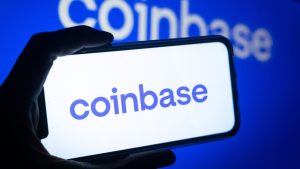From Ethereum to Solana and Back: Wormhole Lets You Send Your NFTs Across Blockchains

In brief
The Wormhole NFT Bridge lets users move NFT assets between Ethereum and Solana.
The original NFT is locked within a smart contract while a new version is minted on the other blockchain.
Ethereum may currently rule the NFT collectibles space, but Solana has recently emerged as a rival with puny fees and speedy transactions—neither an Ethereum strength. But you can’t buy Solana NFTs on OpenSea or use the popular MetaMask wallet, for that matter, so there’s clear distance between the ecosystems. Until now, that is.
Launched yesterday, the Wormhole NFT Bridge connects Ethereum and Solana with a way to transfer assets between the competing blockchains. It’s a bi-directional bridge that can send assets in either direction, effectively “wrapping” the original NFT asset to make it fully compatible with the other platform.
For example, if you wanted to bring a Solana NFT over to Ethereum to sell it on OpenSea, the bridge would first lock the original NFT asset within the Wormhole smart contract on Solana. A smart contract is what powers decentralized apps , DeFi protocols, NFTs, and more, all via code that performs set instructions.
Rather than literally transfer the asset from Solana to Ethereum, the NFT is frozen within the smart contract and then a new version is minted on Ethereum. The resulting ERC-721 NFT asset can be used and transferred like any native Ethereum NFT, and you can always bridge it back to Solana to release the original version from the smart contract. ERC-1155 standard support is planned, as well.
“Users that are only active on a single chain have no way of getting access to exciting NFTs on others,” Hendrik Hofstadt, co-founder of lead Wormhole contributor Certus One and now Director of Special Projects at Jump Crypto, told Decrypt. “The Wormhole NFT Bridge solves this and allows users to acquire new NFTs that were previously inaccessible, or tap into the liquidity of other chains’ marketplaces.”
An NFT acts like a deed of ownership to a rare digital item, such as an image, video clip, or interactive video game item. Ethereum is the leading platform for NFTs, including such popular projects as CryptoPunks and Art Blocks, and Ethereum-based marketplace OpenSea generated more than $3.4 billion in transaction volume in August alone, per Dune Analytics.
Why would someone bridge an NFT between Ethereum and Solana? For starters, Ethereum has the popular OpenSea marketplace (and others), which could open up Solana-based collections like Degenerate Ape Academy, Solana Monkey Business, and Aurory to a wider audience of potential buyers.
Ethereum NFT collectors may want to bring something over from Solana to put into a single wallet or collection, as well. And there may be upside to porting assets from Ethereum to Solana. After all, Solana is much faster and cheaper to use than Ethereum at present, so moving assets around could prove to be more efficient on the so-called “Ethereum killer.”
Wormhole was first announced in October 2020 with a focus on DeFi applications, with Solana itself pushing the project as a way to scale Ethereum apps with a secondary chain. Last week, ahead of the NFT bridge launch, Wormhole released the v2 version of its main Token Bridge, with plans to add support for other blockchains Binance Smart Chain and Terra, as well.
The launch comes following rapid growth for Solana’s ecosystem, with rising use across DeFi and NFTs, as well as an explosion in value for the SOL cryptocurrency. It skyrocketed in price from about $35 at the start of August to an all-time high above $213 earlier this month, according to data from CoinGecko. However, last week’s Solana network crash may have slowed that momentum: SOL is down 21% over the last 14 days.
“Solana offers users cheap and fast transactions which allow dapps to deliver almost web2-level experiences, enabling a new group of users to get into the space,” Hofstadt commented. “I think this is a valuable component in a cross-chain world where different chains serve different use cases, and adoption clearly highlights that.”















